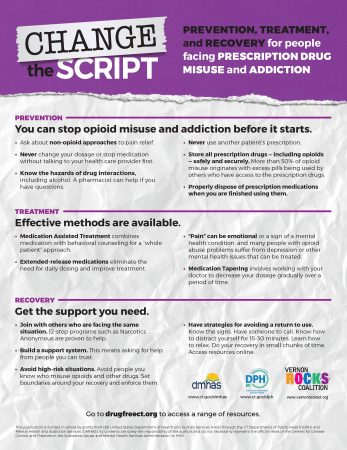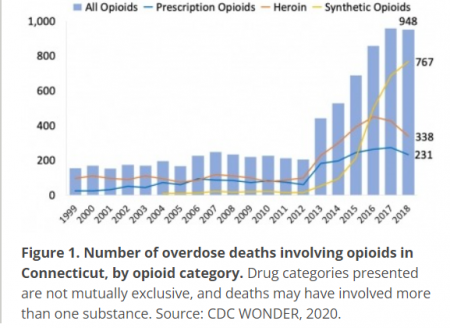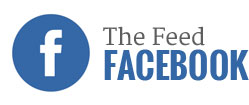Overview
Prescription drug misuse is taking any prescription medication that is not prescribed to you or taking it in a way other than how it was prescribed (for example, taking a larger dose than prescribed or for a different illness or symptom than originally prescribed). Non-medical use of prescription drugs is taking a prescription medication for reasons other than a medical condition, such as for the purpose of getting high.
Three types of prescription drugs that are commonly misused and abused include:
-opioids (such as OxyContin, Vicodin, or codeine) used to relieve pain
-depressants (such as Xanax or Valium) used as a sleep aid or to relieve anxiety
-stimulants (such as Adderall or Ritalin) used to treat attention deficit and hyperactivity disorders
Teen trends
Reported prescription drug use among high school students in Vernon in 2023 was 2.66% compared to nationally in 2021, about 12% of high school students had misused prescription opioids in their lifetime. Many teens and young adults use these prescriptions to get high, help them study, lose weight, or “to take the edge off”. Teens often believe that prescription drugs are safer than “street drugs” like cocaine and heroin. No matter what the reason is, taking prescription medication is very dangerous, especially combined with alcohol or other drugs, and can lead to addiction and illicit drug use (such as heroin use).
What can parents do?
–Talk to your teens about the dangers of using prescription medications and let them know that drug use of any kind is not acceptable in your home and can lead to addiction.
–Safely store and properly dispose of medications. Keep track of the medications in your home and store them in a secure area. Let your kids know that you will be keeping track of the medications in your home and have asked family friends and relatives to do the same. Visit our safe storage and disposal page for more information.
–Know the warning signs. Signs of abuse or addiction may include hyperactivity or sleeplessness; slowed reaction times, slurred speech or disorientation; sudden weight loss or weight gain; excessive sleep; unusual clothing choices (to hide injection sites); drug paraphernalia; and stealing.
Connecticut’s Opioid Crisis
In 2018, opioid-related overdose deaths amounted to 948 lives lost. This crisis is affecting all types of people. Overdoses are more common in suburbs and rural areas than in urban areas. Most people who have problems with opioids are top income earners in their communities. White males are more likely to experience opioid overdose. Now more than ever, we need to join together to face the opioid epidemic.
Learn more about CT’s strategies to overcome the opioid crisis at drugfreect.org.

Remember
YOU CAN STOP OPIOID MISUSE AND ADDICTION BEFORE IT STARTS.
If you or a loved one does become addicted, EFFECTIVE METHODS OF TREATMENT ARE AVAILABLE
During recovery, there are resources available to GET THE SUPPORT YOU NEED.
Sources: National Institute on Drug Abuse; National Institutes of Health; U.S. Department of Health and Human Services.
Revised November 2021



